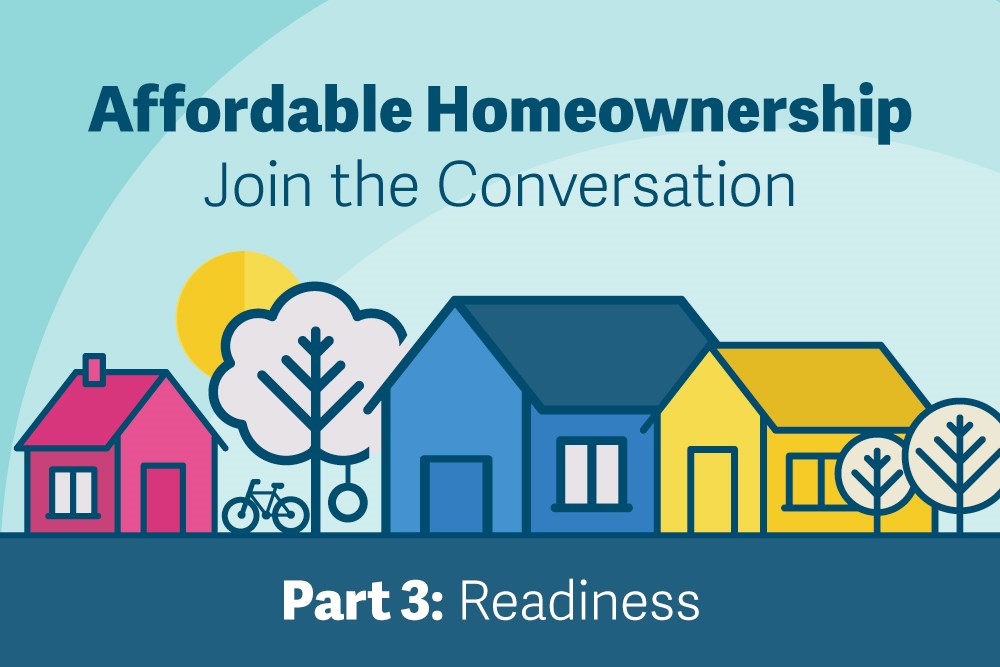This is the third in our 5-part Affordable Homeownership Series: Addressing the racial equity gap in homeownership
To help close the racial homeownership gap, the mortgage industry needs to participate in closing the racial financial literacy gap.
In the first article of this 5-part series, Geoff Cooper laid out 4 areas any racial equity plan should attempt to address: Awareness, Readiness, Community and Solutions (ARCS). In the second article of the series, Vance Edwards addressed some considerations for how to build awareness with “mortgage ready” Americans. He pointed out that homebuyer education is needed well before the mortgage application to help potential homebuyers understand the benefits of homeownership and the process by which they can become homeowners.
To engage with today’s topic, Readiness, let’s expand the concept of education to address this critical question: For applicants who are not yet mortgage ready, are there systems and practices in place to help them overcome the barriers they face that may be within their control?
True homebuyer education happens well before the mortgage application
Traditionally the mortgage industry has thought of homebuyer education as prepurchase counseling, just one requirement on a checklist to close a loan or get down payment assistance.
As of March 2023, the GSEs will require lenders to use the Supplemental Consumer Information Form (SCIF) to collect information about a borrower’s language preference and details about the homebuyer education or counseling used, if any. The information gathered should help the industry better understand how this formal type of homebuyer education meets borrower needs.
But there’s a heavy selection bias in the prepurchase model of homebuyer education: you’re reaching consumers who have already made the decision to purchase. To address the racial homeownership gap, we need to reach and educate communities much earlier, significantly before the buying process – as early as high school.
Early education means financial literacy
A recent report by Freddie Mac estimates that among the credit visible population age 45 and under, 54% of Black Americans and 37% of Hispanic Americans are “Not Currently Mortgage Ready,” compared to 26% of white Americans. How much closer to being “mortgage ready” could these groups be if they had received early education on:
- The importance of budgeting, saving, avoiding unnecessary debt and paying off the debt you do acquire
- The role of credit history in getting a loan and how to become creditworthy
- The role of a banking institution and what it can provide consumers
- The short- and long-term benefits of homeownership for financial stability and wealth creation, including generational wealth creation
- How getting a mortgage loan is indeed achievable
- The steps involved in getting a loan and buying a house
A focus on early financial education could be considered an extension of the NeighborWorks Full-Cycle Lending framework, which emphasizes the wrap-around services homebuyers and homeowners need to maintain successful long-term homeownership. A young person with a solid understanding of what it takes to buy and maintain a home may be more prepared to become a homeowner earlier, stay in that home, build equity, and ultimately build and pass on wealth.
Partner with organizations that have earned the trust of their communities
When looking for ways to address the racial equity gap in homeownership, it’s important to recognize the very real ways that communities of color have been disenfranchised by the housing and mortgage systems in our country. It was not all that long ago that redlining was the practice of the land. People of color have their own lived experiences and strong memories of how housing inequities affected their grandparents and parents, which can lead to distrust of the banking industry.
To overcome that distrust, partner with local organizations that are truly embedded in the communities you’re trying to reach – those that have built trust and brand awareness based on long-term, sustained engagement. They could be nonprofits, educational institutions, housing authorities or your local NeighborWorks.
One way to partner with an organization would be to help generate or expand a financial education outreach program for high-school age kids and their families. The appetite is there – Pew reports that a growing number of states already require or will soon require some form of financial literacy course for high school graduation.
To earn trust, be visible
To truly build trust, banking institutions need to do more than provide financial underwriting or sponsor an event.
- Be physically visible in the community, whether that’s through a brick-and-mortar location, presence in your nonprofit partners’ spaces, or pop-up shops
- Focus on the financial health of the community, not loan units. Invest in the communities that you want to reach
- Honestly assess and address representation in your own organization – too often, consumers do not see themselves in the institutions purporting to help them
Building your checklist
As you build out your racial equity plan, here are a few suggestions to consider in the area of Readiness.
Understand your market
- Where do underserved communities in your area live, work and play? Do you already have a physical presence in those neighborhoods?
- What is the community level of trust in banking and lending institutions? What attitudes toward money, wealth and homeownership are prevalent?
Find partners
- Which organizations in your area can you partner with that have built trust and brand recognition with communities of color?
- Who provides HUD-approved homebuyer education within your lending footprint?
- Which local high schools, trade schools, colleges and universities may want to collaborate on bringing more financial literacy training and content to young people and their families?
Examine your own systems and practices
- How does the demographic makeup of your institution compare to the community you serve?
- Are your loan officers prepared to help homebuyers who need extra guidance?
- How are you employing fintech to promote readiness? Can you offer technology that helps consumers manage their finances and credit in such a way that they become mortgage ready sooner?

